Galapagos Mangrove adventure
Our previous post highlighted marine iguanas. Today brings even more Galapagos adventure - life in the Galapagos Mangrove.
Today we are in Caleta Tagus on the island of Isabela in the morning and Bahia Elizabeth on Isabela in the afternoon.
Hiking and birds
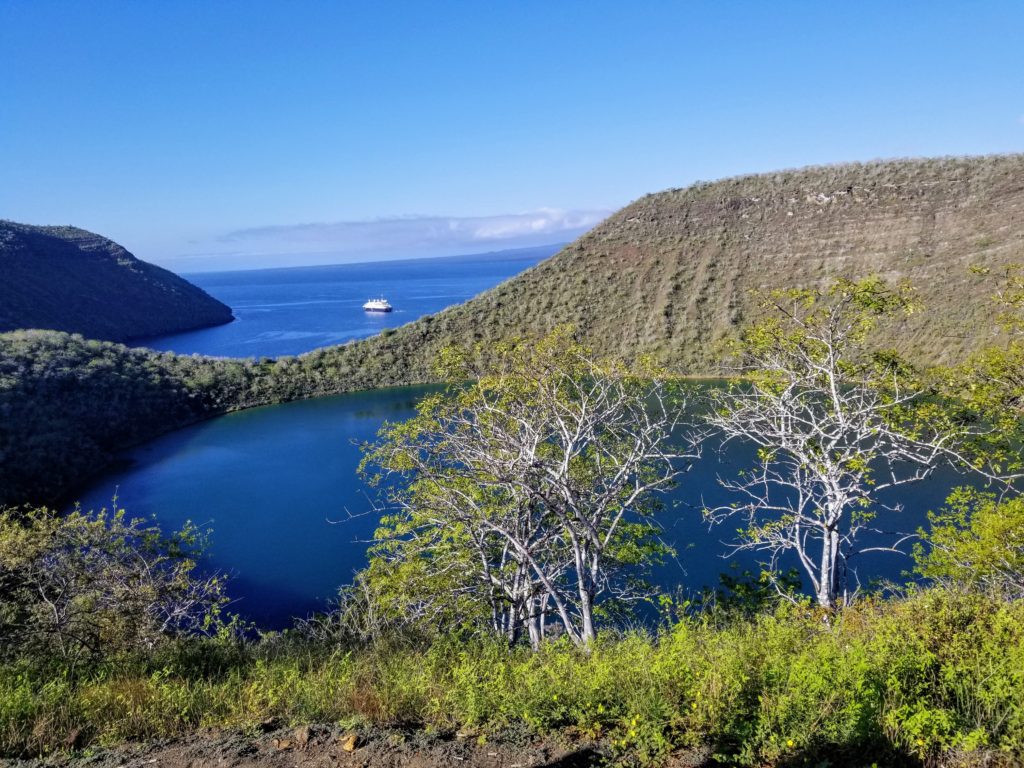
As has been the case for the last few days, we have an early start. Our hike starts promptly at 7 am. After our Zodiac ride ashore, it’s a steep ascent up. First the rocks, then some stairs, then finally an inclined volcanic ash trail. Along the way, our guide, Bernarndo (Beard-arno) points out warblers, finches, mocking birds and doves. Doves, due to their larger size, are able to go between the islands and spread at least some commonality across the archipelago. We also see how certain plants have adapted to the lack of water - very small leaves or needles in some cases. And, since there’s only a few birds and bees around, the bushes don’t really need to compete and so the flowers are few, small and rather pale.
Plant strategies to survive
We also learned a couple of plant survival / adaptation stories. For example, the cotton plant. Cotton is light and easily floats in the breeze and, since the seeds are embedded in the cotton fibers, it makes a perfect reproduction strategy for the dry, windy Galapagos. And then there's a plant in the daisy family that looks dead from the ground but is very much green and vibrant at the top. The idea is to fool the centipedes and other ground dwelling insects into thinking that the bush is dead and not worth attacking.
-
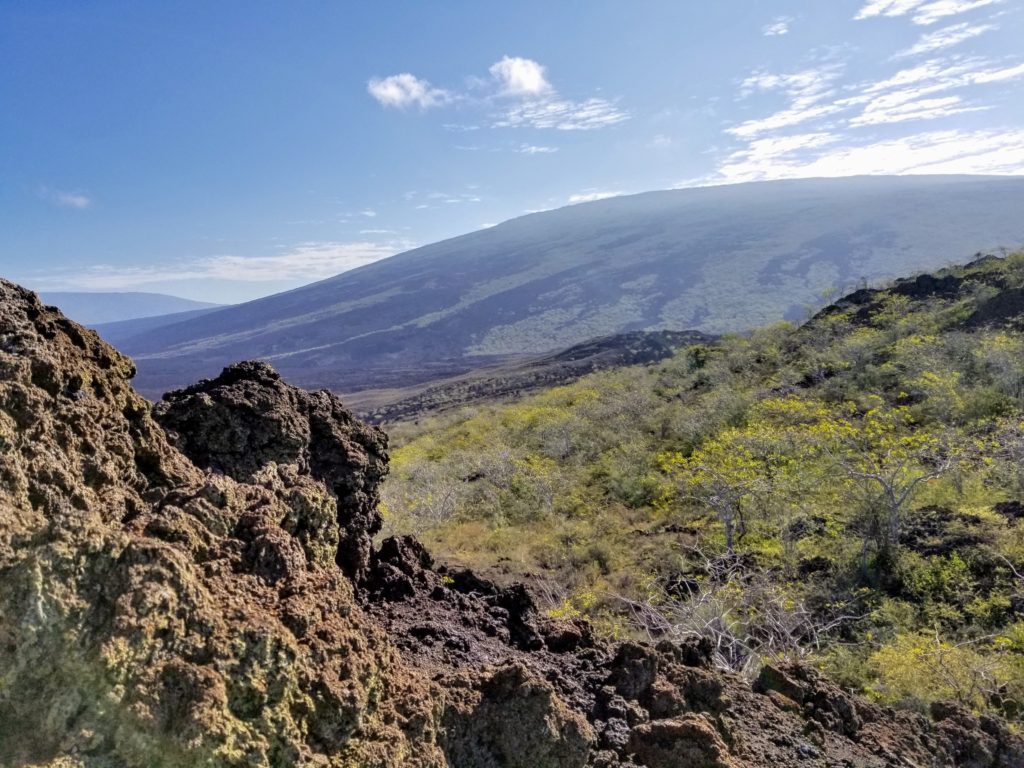
Note the different lava flows and forested areas -
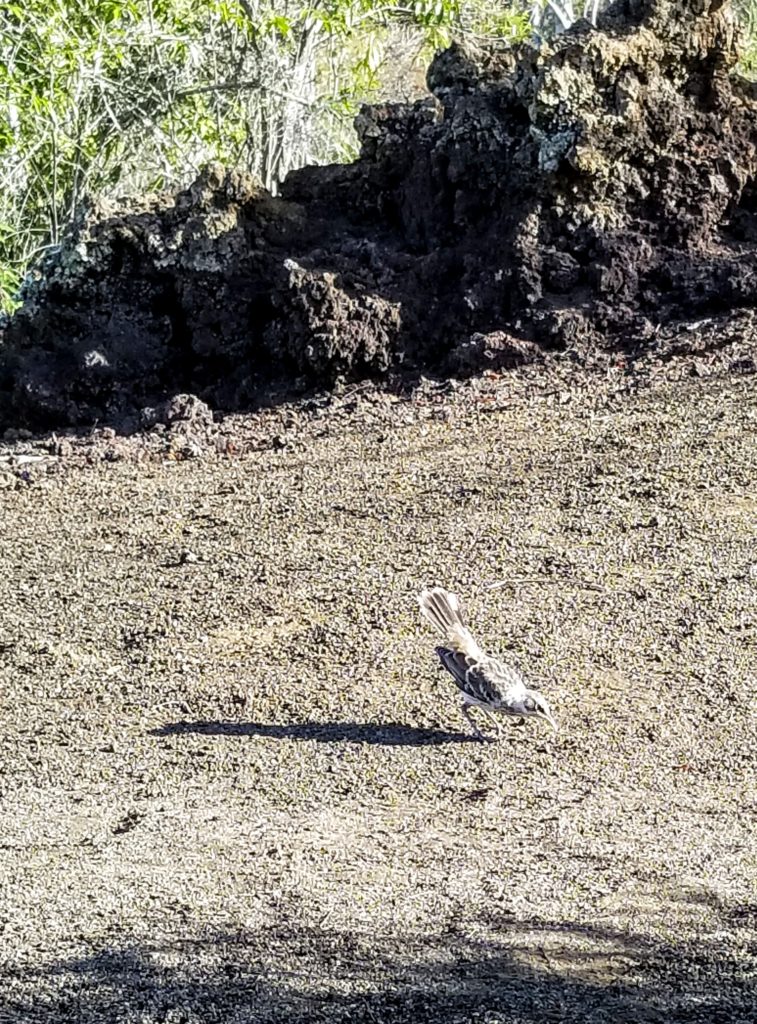
Ground Finch -
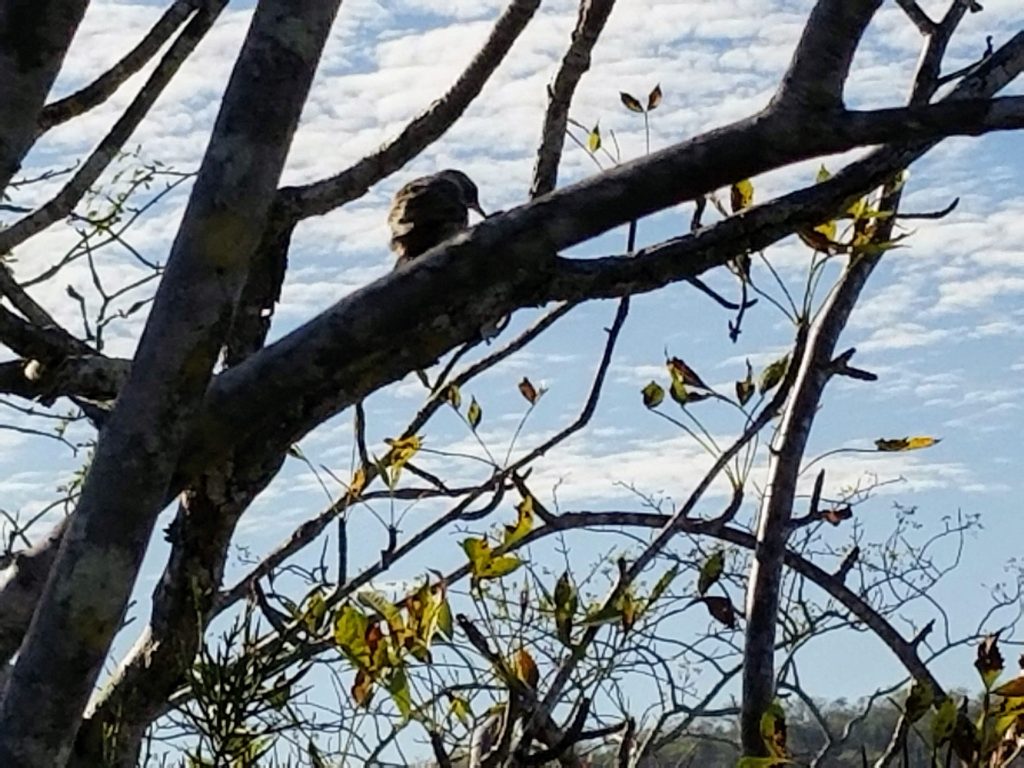
Long thin beaks for extracting insects
We reached the top volcanic section and survey the surrounding vista. Lava flows were clear as were the demarcations created by many geologically dated lava flows. Older sections were lush, newer were barren rock (soil had not yet formed here).
Snorkeling with sea lions
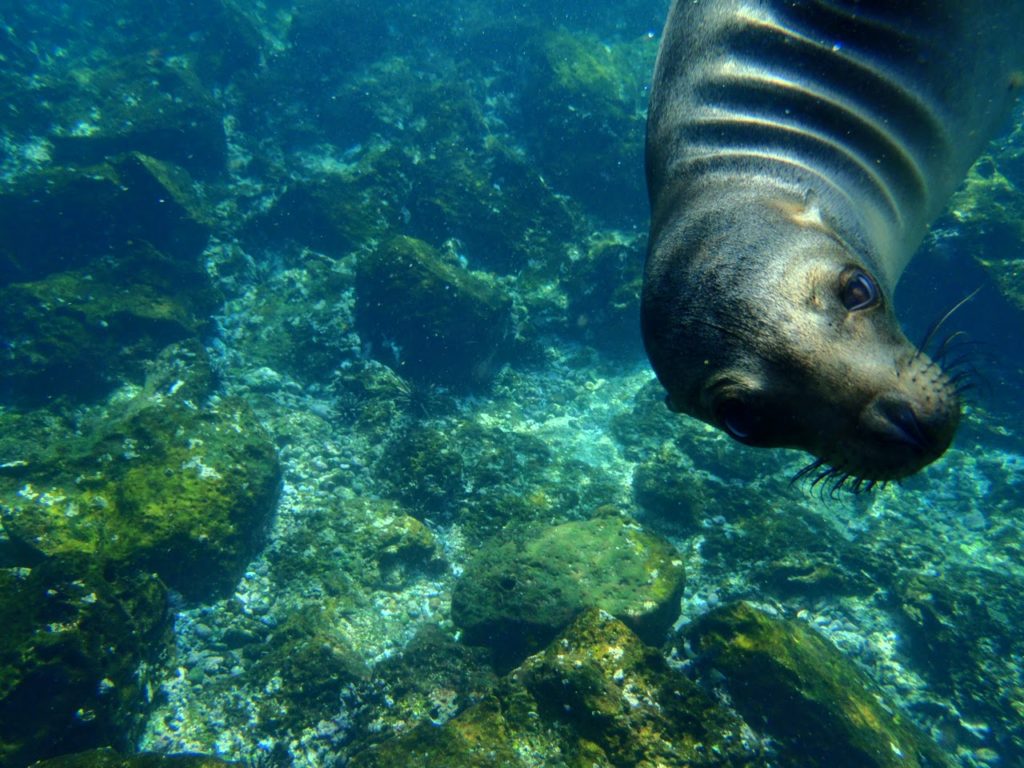
By 10 am we were off on a snorkeling excursion. It was from a zodiac boat though the shore was never far away. This may have been the best excursion yet even though the the water temperature was barely above 75 F (with the wet suites, it wasn’t a factor at all). We saw loads of giant sea turtles, swimming gracefully and eating voraciously. The sea lions as always playfully swam among us; once a sea lion came directly at us and only swerved away at the last second. When you see them up close, their eyes are much larger than you’d expect. There was one very large bull sea lion - he wasn’t playful in the least. At one point we looked up and saw a pelican perched on a rock directly in front of us.
The flightless cormorants were actively looking for food underwater - they are as graceful underwater as they are clumsy above. And for the first time we swam with penguins. We first saw them floating on the water surface looking very duck like But once they dove down and swam underwater they became streamlined and very quick. (too quick to photograph). The sea lions came and chased them around a bit but the penguins’ agility ultimately proved successful. Finally they hopped up on a rock only about 3 feet away from us to dry out. Standing around 12 inches tall, they were still looked like a classic stately penguins. This was the first time we saw so much coral and of course we saw a variety of fish: parrot fish, hog fish, tangs, angel fish, blennies, and many more.
-
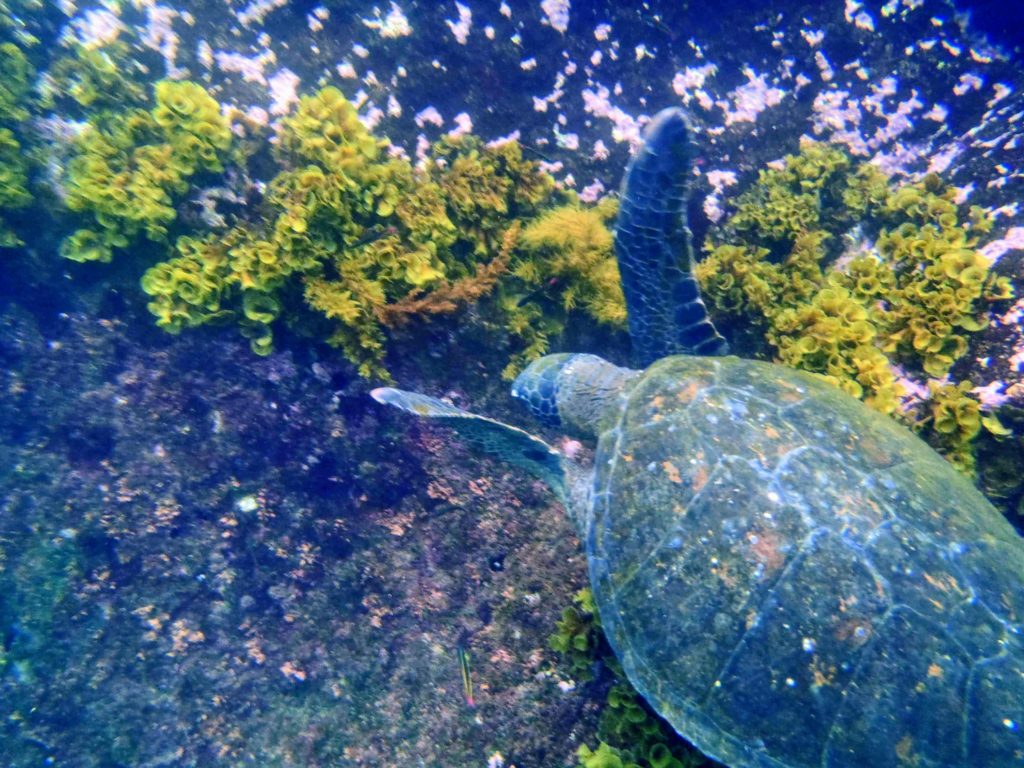
Sea Turtle foraging -
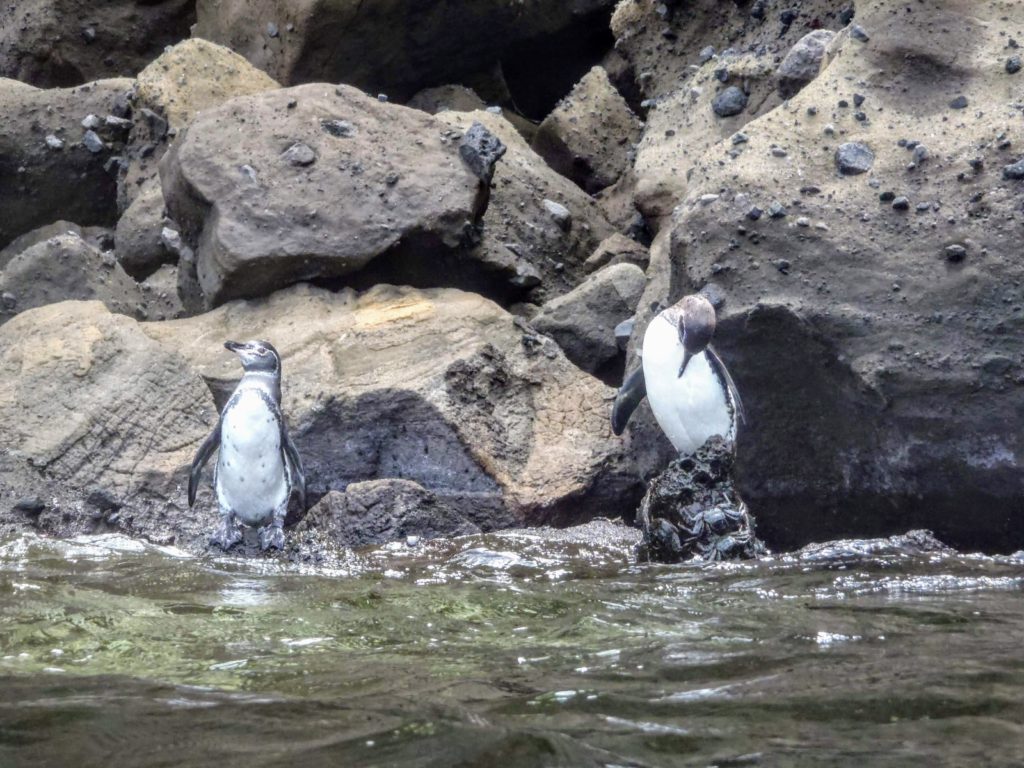
Penguins from the water -
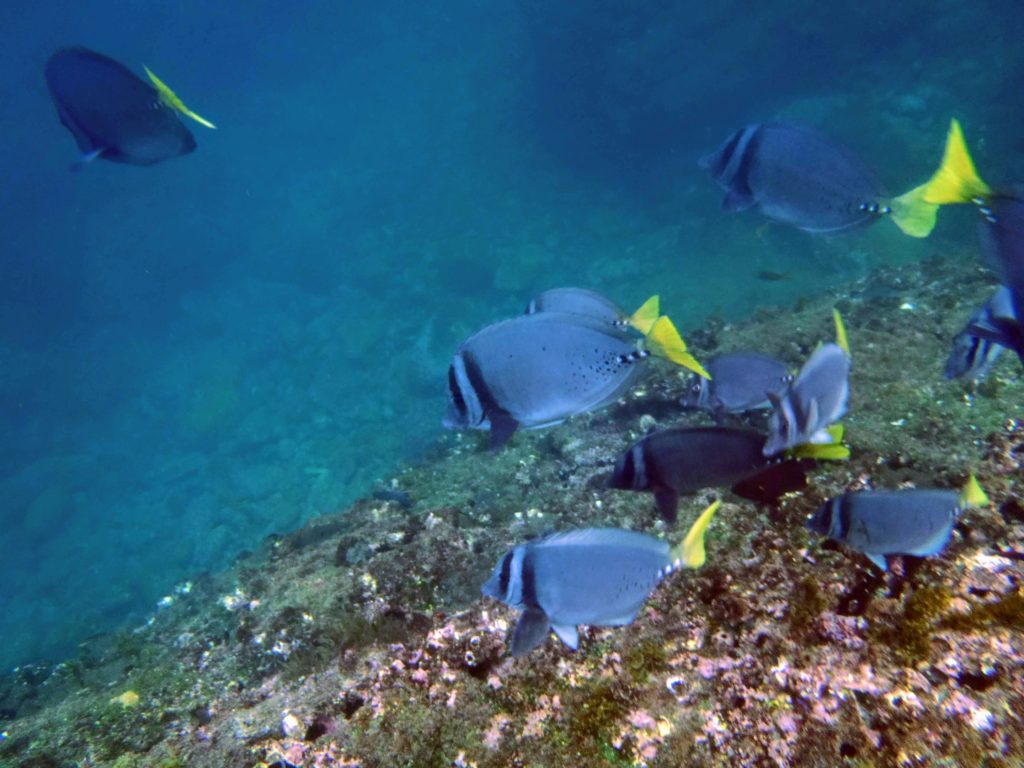
Blue Tangs -
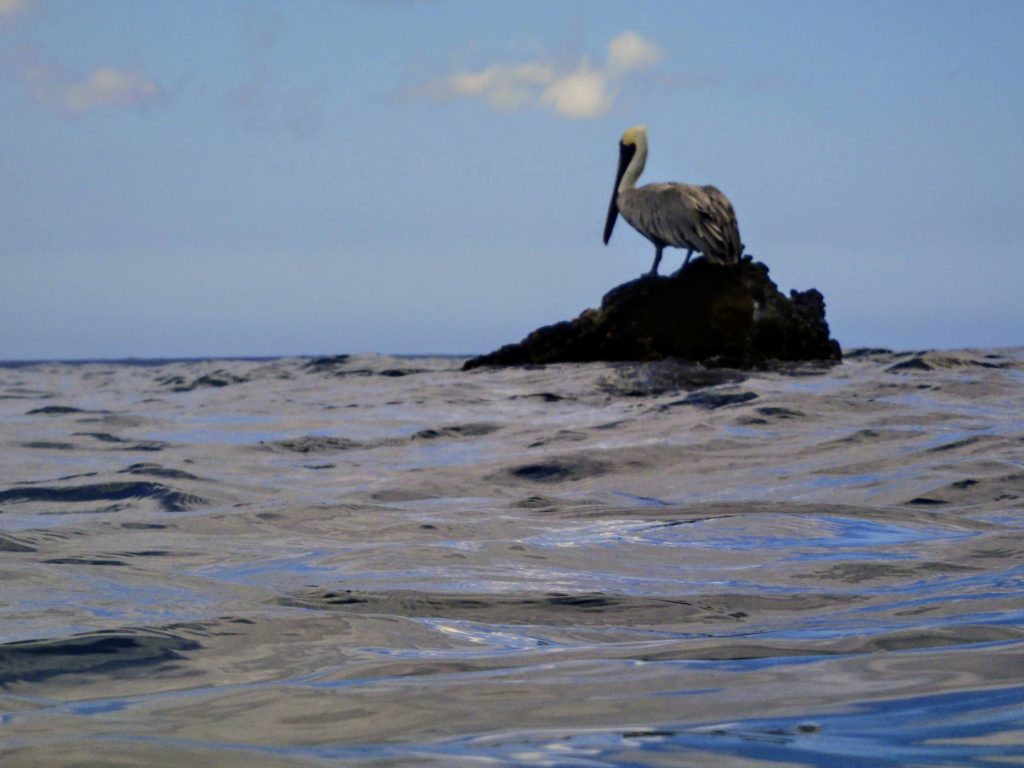
Pelican from fish eye view
Lunch on the ship
We’ve grown accustomed to eating lunch outside on the grill. Today we had a very nice salad, topped with a huge chunk of freshly prepared red snapper and we shared an order of stuffed calamari. Eating lunch while viewing the islands on both side in calm seas while having a beer is the very definition of relation.
After lunch we had a little time to ourselves. There’s a lecture at 2 pm on the marine birds of Galapagos before the afternoon zodiac tour of the mangrove trees at Bahia Elizabeth on Isabela.
Galapagos Mangrove
We zodiaced from the ship to an area filled with mangrove trees. The mangrove trees originally came all the way from Thailand via pods floating on the Pacific currents. The Zodiacs maneuvered perfectly through the mangrove trees and we saw plenty of herons, turtles and even a sea lion. The mangroves provide perfect protection - from the sun as well as predators. The best part was when the guides cut out the motor and rowed the Zodiac - nice and quiet. The mood became a zen like calm (especially in the shade). You could really see why the animals love the Galapagos mangrove. On our way back to the ship, we passed a small rock out-cropping. Here we saw a sea lion family and a blue footed boobie, a pelican and a cormorant family. All within a few yards of us but totally disinterested in us.
Sea Lion Family
-
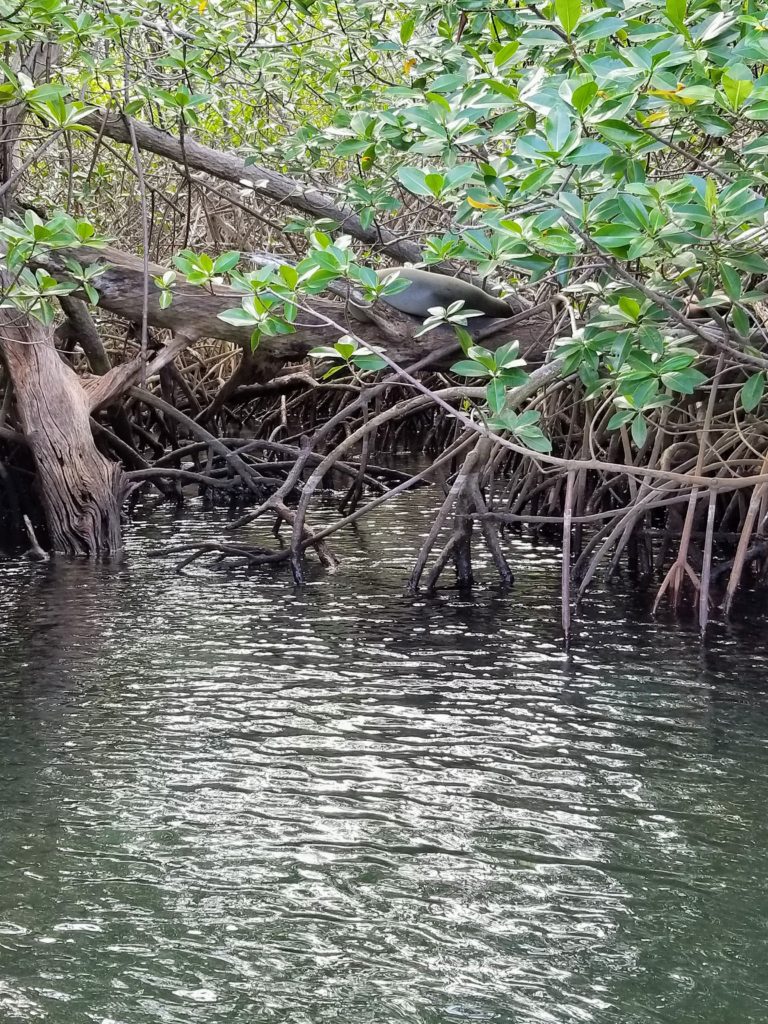
Can you see the Sea lion? -
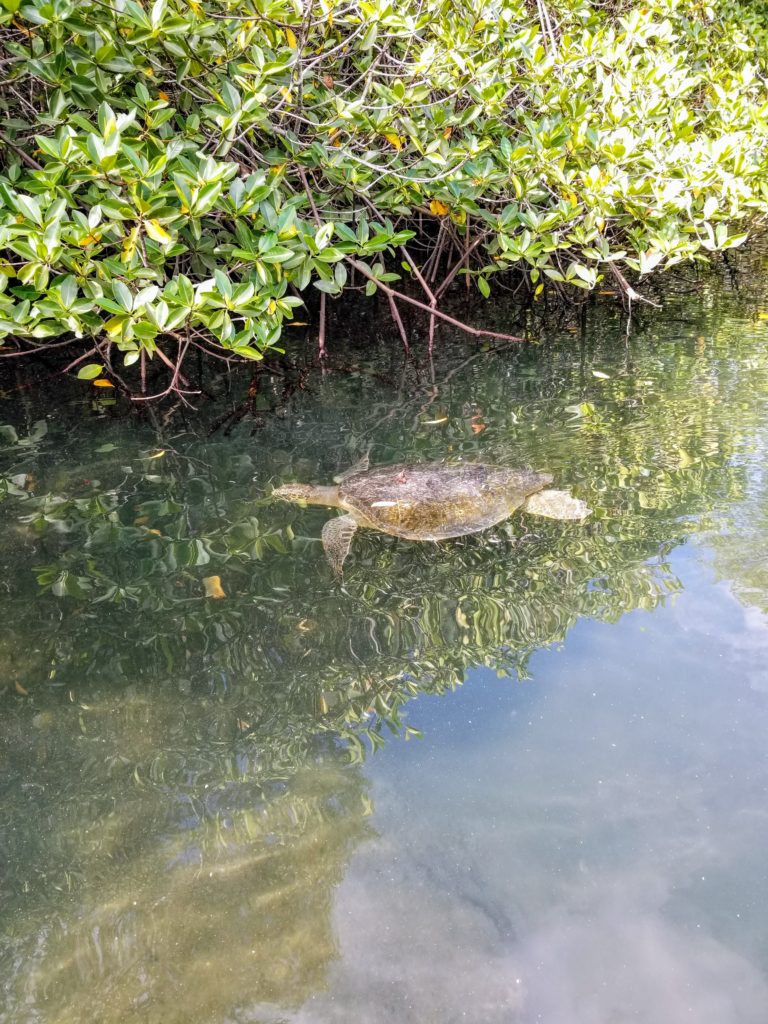
Sea Turtle in the Mangrove -
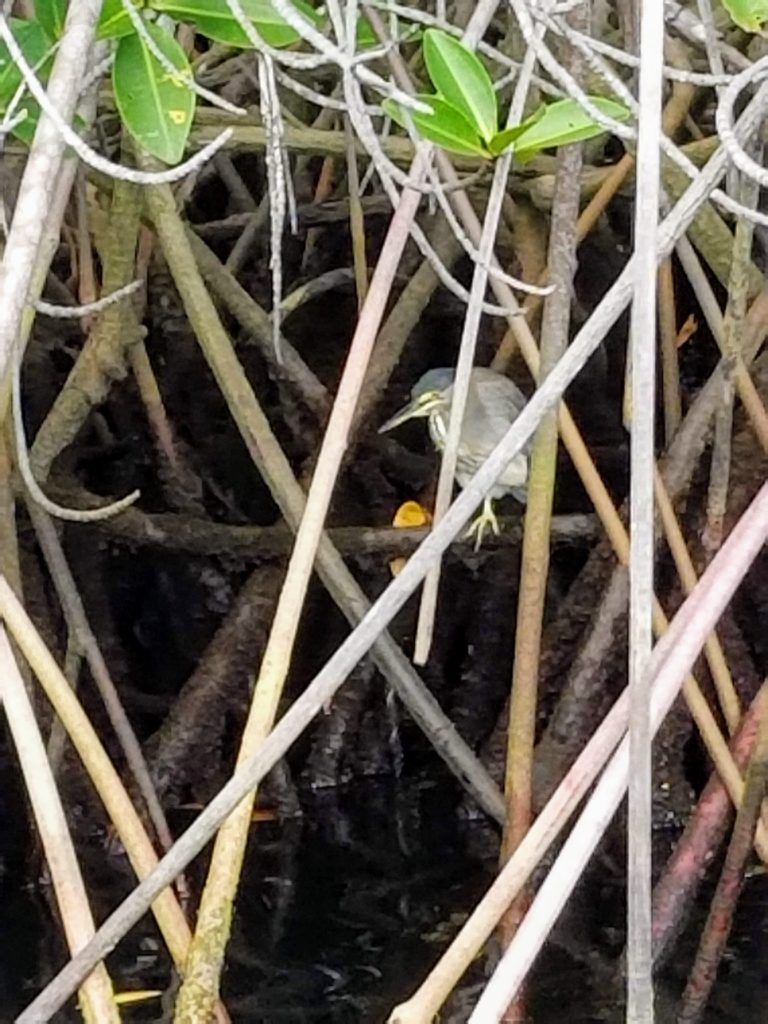
Heron seeks refuge in the Mangrove trees -
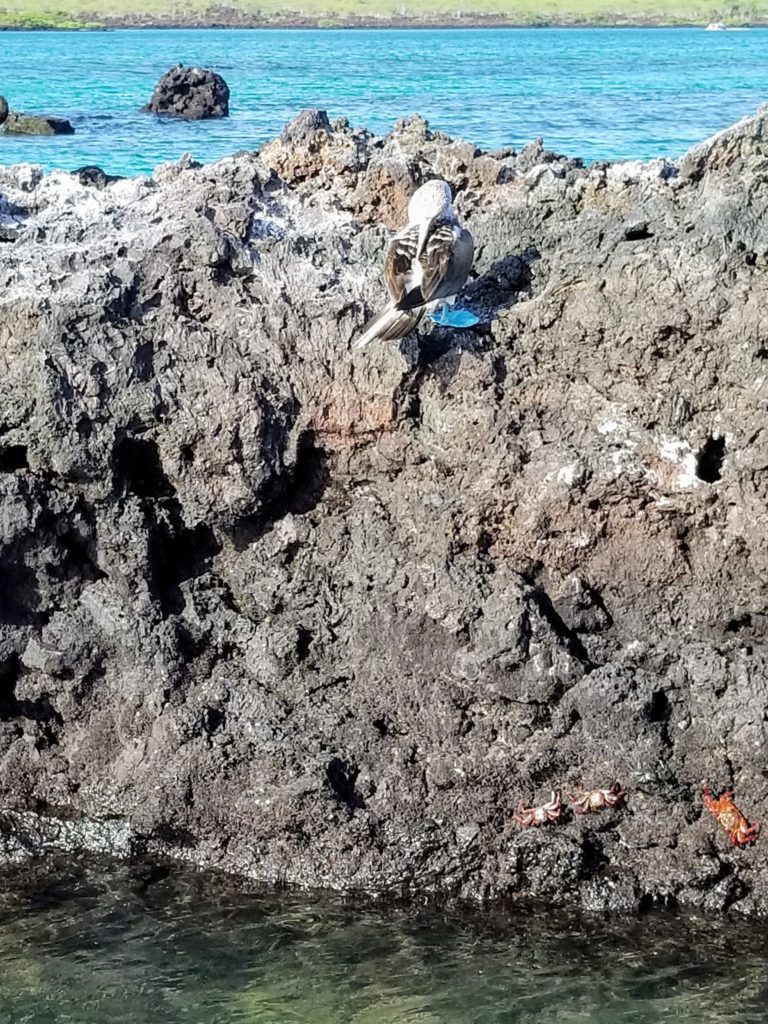
Blue footed Boobie
Evening on Silversea Galapagos
After the mangrove tree trip, they showed the BBC special on the Galapagos as yet another way to educate. Very much worthwhile watching.
There was a party that evening (cocktails, music, appetizers). Tonight we decided to have dinner in the cabin. The butler brought up the menu, we ordered and within 15 minutes dinner came. You can order anything from the main dining room (plus special requests). And you can get it served course by course or all at once. The service was terrific as was the food. We watched a movie in the cabin and just relaxed during and after dinner.
To catch up on our series:
Next: Mangrove Adventure
